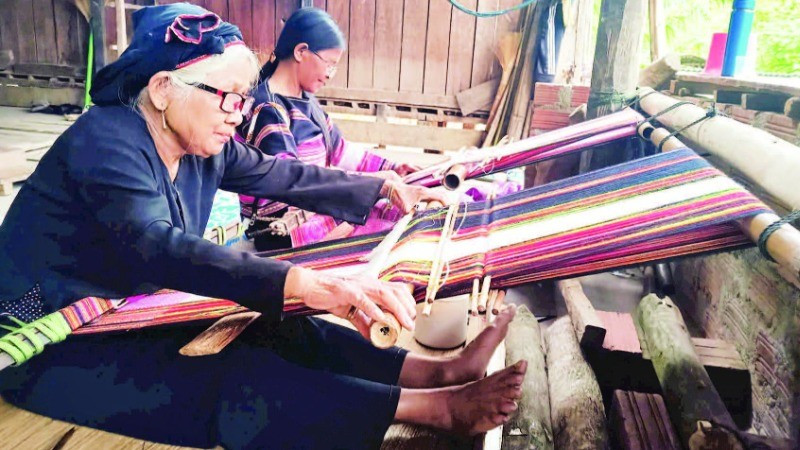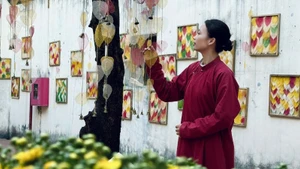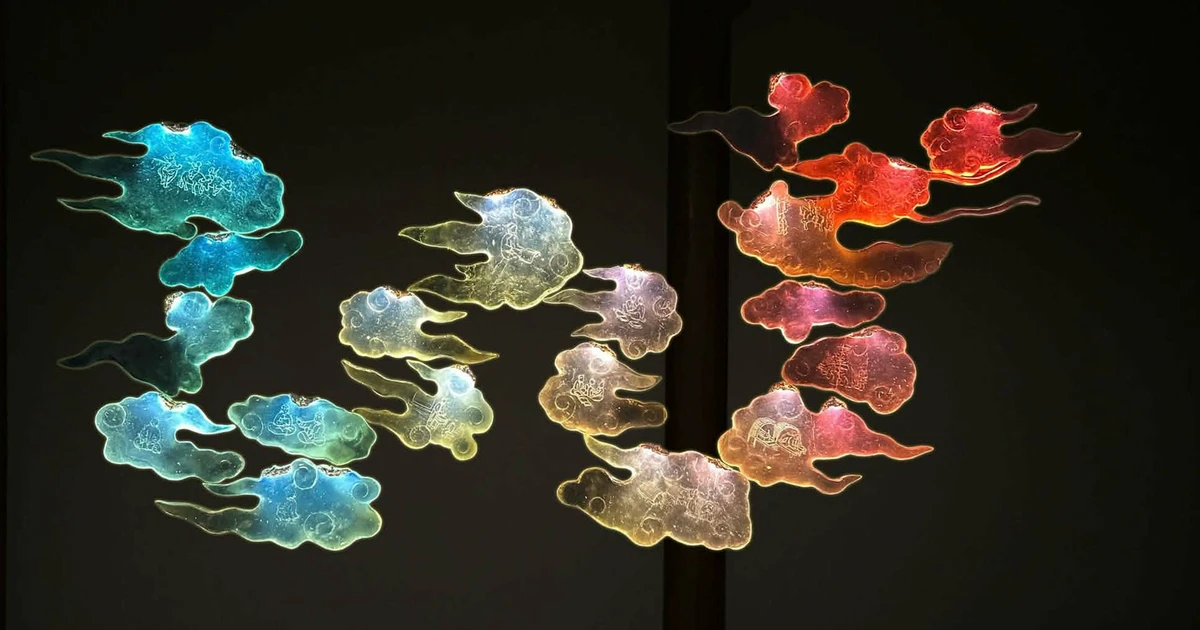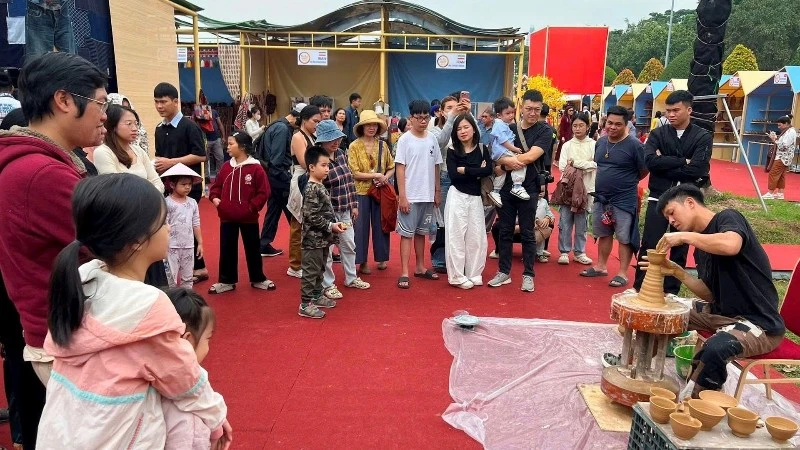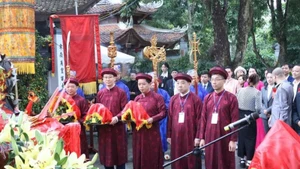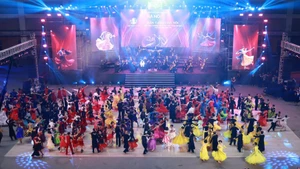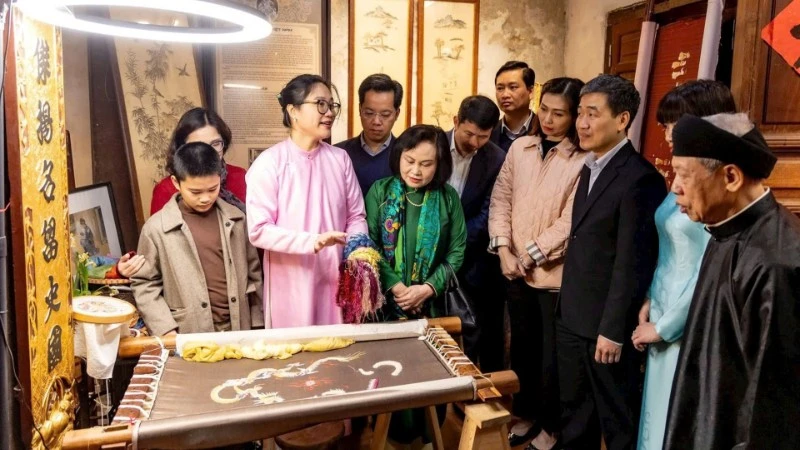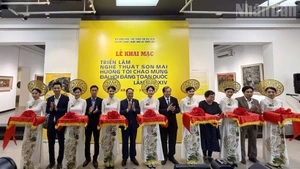Devotion to the craft
Weaving in Ha Ri Hamlet has been preserved and passed down through many generations. Mrs Dinh Thi Choai, who has worked in the craft for decades, shared that producing a finished item involves meticulous steps, such as spinning yarn, dyeing, and hand-weaving. This process requires dexterity and patience, sometimes taking up to a week or half a month to complete a single product. The most distinctive feature of Ha Ri’s weaving is its intricate patterns, including lotus flowers and netted motifs, which distinguish it from other weaving villages. The designs are more elaborate and detailed, showcasing the exceptional creativity of the artisans here.
The woven products are not merely daily items but also carry the emotions and soul of the artisans. Each motif on the fabric tells a story of the Ba Na people’s culture, customs, and worldview. From choosing yarn and spinning to dyeing and weaving, every step is carried out with the utmost care and dedication.
Dinh Thi Duoi, a weaving artisan in Ha Ri Hamlet, said that although weaving is strenuous and time-consuming, villagers continue to practise it out of love for the traditional craft. She confided that “If we don’t pass it down to the next generation, the weaving craft will disappear. No matter how hard it gets, we still strive to help the young learn the trade and understand the traditional values of our ethnic group.”
Nguyen Van Tu, Vice Chairman of Vinh Hiep Commune People’s Committee, stated that the commune has prepared a dossier requesting official recognition of the brocade weaving village in Ha Ri Hamlet as a traditional craft village. The commune authorities also have plans to revive and develop the weaving trade, from compiling documentation to proposing support policies for training and village development. Recognition of the craft village would be a crucial step in promoting its products, helping locals add economic value. The local government is committed to working with the community to improve product quality, explore new markets, and connect weaving with tourism to ensure stable income.
Solutions to preservation and development
Despite its rich cultural value, the hand-weaving craft in Ha Ri is facing the risk of decline. The rise of modern industries and changing market demands have led younger generations to show less interest in inheriting the tradition. Currently, craft teaching is mostly conducted at home and depends heavily on the enthusiasm of older artisans. However, limited time and training conditions have led to a decline in the number of people continuing the trade. Moreover, the woven products still lack stable market outlets. The absence of promotional opportunities and market development has limited the competitiveness of these products, making it difficult for locals to sustain the craft.
Therefore, local authorities need to coordinate with social organisations to provide infrastructure and financial support, thereby enhancing the effectiveness of craft training. In particular, organising exhibitions and cultural events to promote woven products is essential to expand markets and increase the economic value of the craft. The weaving tradition in Ha Ri also holds great potential for integration with tourism development. Visitors can experience the entire production process, from spinning and dyeing to weaving. This is not only an opportunity to promote local culture but also a way to increase income for residents, motivating them to preserve and develop their traditional craft. At the same time, creating unique souvenir-style woven products will help attract tourists and reinforce the position of the craft village in the market.
Le Minh Thong, Vice Chairman of Vinh Thanh District People’s Committee, said that the district has been implementing the action programme of the Provincial Party Committee and the plan of the Provincial People’s Committee on the preservation and development of traditional craft villages. A notable effort is the development of a Project on Preserving and Developing the Traditional Weaving Village of Vinh Hiep Commune. This project has been completed and is currently under review by relevant authorities for approval by the Provincial People’s Committee. The project emphasises preserving the village’s long-standing historical values and proposes training policies for ethnic minority communities to maintain and develop the traditional weaving craft. Additionally, Vinh Hiep Commune has proactively submitted a dossier to the Provincial People’s Committee and the Department of Agriculture and Environment for assessment and recognition of Ha Ri Hamlet as a traditional craft village. This is not only an effort to preserve cultural heritage but also an initiative to link craft village development with community-based tourism, creating unique products, stimulating local socio-economic growth, and generating employment, especially for ethnic minorities.
The hand-weaving craft in Ha Ri Hamlet is a precious cultural heritage of the Ba Na people and a vital element in the local socio-economic fabric. Preserving and promoting the weaving tradition requires effort from the community and all levels of government. This is not only a means of safeguarding cultural identity but also a pathway towards sustainable and long-term development for Ha Ri Hamlet.
